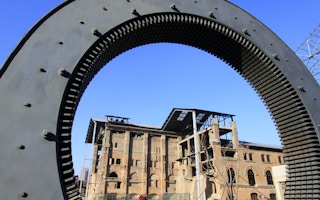Investors should encourage cement companies in China to disclose environmental performance data to help reduce environmental costs and manage the risks of tougher pollution control legislation, according to a report published on Thursday by the Innovation Centre for Clean-air Solutions (ICCS) and environmental consultants Trucost, and funded by Energy Foundation China.
Over the past decade, China has implemented many new policies to reduce pollution and achieve greener economic growth by introducing tighter environmental regulation, closing down outdated production sites and investing in cleaner technology.
China’s policies have been driven by public concern over air quality and the need to make cement manufacturing more efficient and productive.
The report, entitled “Counting the Cost: Assessing the Financial Impact of Air Pollution from China’s Cement Industry”, assesses the environmental cost of cement manufacturing in the country — the world’s largest cement market.
The assessment includes 32 stock-exchange listed cement companies operating in China. Trucost calculates the total environmental cost of these companies to be $31.5 billion (RMB 195.4bn) per year.
Over 80 per cent of the cost comes from the health effects of air pollution caused by inefficient cement kilns that lack adequate pollution control technology.
ICCS’s director Tonny Xie said: “Through the study, we hope to support the practice and application of natural cost accounting in China. We also hope to raise more awareness among investors in China, assisting investors with integrating environmental risks and opportunities into decision-making to jointly support China’s air pollution prevention and control.”
The report finds that 43 per cent of the annual revenue of China’s cement sector could be at risk if regulation and other factors force companies to pay the full cost of their environmental impacts.
“
The lack of corporate disclosure is a major barrier for investors to make informed decisions to pick companies that are more environmental friendly.
Lijian Zhao, program director at Energy Foundation China
This could reduce shareholder returns from investments in the cement sector and damage the ability of companies to repay loans.
To help mitigate these risks, the report recommends that financial institutions should encourage cement companies to publish data on their environmental performance, such as releases of air pollutants including particulate matter, nitrogen oxides and sulfur dioxide.
In September 2015, China’s State Council issued the “Integrated Reform Plan for Promoting Ecological Progress” which requires mandatory disclosure of environmental information by listed companies.
However, the report finds that only 14 per cent of the necessary data is currently being disclosed by cement companies in China, compared to 70 per cent for western companies. Companies that disclose environmental data tend to have better performance.
Best practice is for companies to publish integrated company reports which disclose monetized social and environmental data alongside financial performance data.
Lijian Zhao, program director at Energy Foundation China which supported the research, said: “To a certain extent, poor corporate disclosure makes the assessment of environmental costs a challenging task. The lack of corporate disclosure is a major barrier for investors to make informed decisions to pick companies that are more environmental friendly.”
Companies should also disclose plans to upgrade kiln technology and invest in pollution abatement, as well as using alternative fuels and raw materials in line with international best practice.
In analysing the business case for improvement programs, cement companies should consider the need to minimise the risk to their business as the cost of environmental impacts become internalised. Financial institutions should finance efforts by cement companies to invest in pollution monitoring and abatement technology as this cuts environmental costs and hence reduces risk to investors.
The report also recommends that financial institutions should apply a robust approach to quantifying and monetizing environmental risks, and integrating their consideration into investment decisions. The method outlined in the research is an important starting point towards developing a risk assessment framework. Investors could allocate higher risk premiums for assets more exposed to environmental costs.
Investors could engage with poor-performing companies and consider divesting from firms with inadequate improvement plans.
Chaoni Huang, Trucost’s head of business development in Asia, said: “This groundbreaking research reveals the full extent of the costs of air pollution from China’s cement industry. ‘Polluter pays’ legislation increasingly means that cement companies will have to disclose how they are measuring and managing their environmental performance. Investors can help drive improvements by adopting an effective risk management framework that quantifies environmental costs and incorporates them into decisions.”
Achieving national environmental targets set by China’s 13th Five-Year Plan (2016-20) will require an annual investment of at least $320bn (RMB 2tn) into environmental protection, energy efficiency, renewable energy and clean transportation.
The government is expected to contribute only 10-15 per cent of all green investment, with private capital needed to make up the shortfall. China’s cement sector will require at least $45bn (RMB 280bn) of investment to achieve a green transformation in line with national targets.
Tonny Xie, ICCS director, said: “Building a China-specific environmental cost assessment system is fundamental to develop and accelerate green finance and investment in China. ICCS plans to expand this approach to other critical sectors in China.”
The report is available to download here.

















